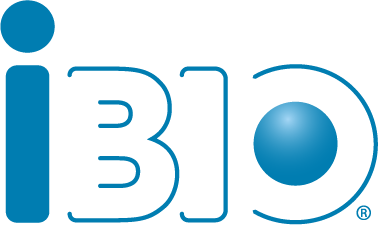Deerfield, Illinois-based Lundbeck is widely known as being at the forefront of brain science. The biopharmaceutical company also has built a strong heritage helping patients with rare disease. iBIO invites you to learn more about the company and its connections to the rare disease community through this Q&A with Lundbeck’s John Arena, Senior Vice President and U.S. Chief Commercial Officer.
What prompted Lundbeck to first invest in products targeting rare disease?
Lundbeck is solely focused on advancing innovative therapies for brain diseases and we have been involved in rare central nervous system-related diseases since we began operating in the U.S. more than a decade ago. Brain research is perhaps the most challenging space in drug development, and so we were not intimidated by the daunting challenge of rare and complex diseases.
We see ourselves as an instigator of progress because of our special expertise and a commitment in brain diseases. As a pioneer in rare diseases, we understand that our risk-taking commitment creates opportunity for other companies to enter. When we are successful, it encourages others to enter the space, and that advances research and treatment options for patients.
Lundbeck brought to market a therapy for a rare disorder that affects people with certain autonomic conditions such as Parkinson’s disease and multiple system atrophy. Can you share some background on the need for this treatment option?
Not only was there no available treatment for the disorder, but there was also little understanding of it within the prescriber community, and most healthcare professionals were not trained in how to identify it. We invested in patient and provider education. And now, as our product loses exclusivity, there is enough interest in this space and recognition of the need that there are a number of generics entering the market.
Lundbeck has developed enduring relationships with rare-disease patient communities, and the company is known to maintain long-term commitments even after you are no longer actively marketing products. Can you give us an example of this ongoing commitment?
Recently, we completed the work needed to enable more patients to gain access to a medicine developed and brought to market by the company back in 2009. This was accomplished by pursuing a two-year effort to get FDA approval for a label expansion for the product, even though the medicine had already lost exclusivity, has generic competition and Lundbeck would reap little to no return from its investment in the label expansion.
The medication is used to treat a type of rare seizure disorder in children and was originally approved for infantile spasms in appropriate patients ages 1 month to 2 years, as well as refractory complex partial seizures in patients 10 years and older with inadequate response to alternative treatments. That meant the medication was not approved for use in children ages 3 to 9, and after the medicine lost exclusivity two years ago, allowing for generic competition, children in this age group were often denied insurance coverage, even if they had used it successfully prior to age 3.
After being informed of the denials by the TS Alliance, a patient group with which we have a long-standing relationship, we committed to expanding the label. Upon evaluating our data, the FDA approved a label that broadened the indication for refractory complex partial seizures in patients down to 2 years of age or older. This label expansion now means there will be no age gap for appropriate patients needing critical access to this medication.
That story is intriguing on several levels, including the fact that the company chose to invest in a product where there may be little, if any, benefit to its business. Why did Lundbeck take this path?
For us, it’s not enough to say we put patients at the center. It’s our actions that matter. And in this case, we enthusiastically took on the expense and effort of the label expansion because it was the right thing to do. It was important to the patient community and would allow more children to be treated, whether or not they were on our therapy or a generic alternative.
In celebration of Rare Disease Day, what message does Lundbeck have for patients, caregivers and HCPs within the rare disease community?
When you are affected by a rare disease, you can feel stranded and unseen. But with 25 million to 30 million Americans impacted by rare diseases, you are far from alone, and you deserve to be seen. This Day recognizes and celebrates all those in the rare disease community, and we rally around you.

